Art & Exhibitions
Why is Ding Yi One of China’s Most Popular and Collectible Artists?
His new show at Long Museum West Bund is his most ambitious and beautiful to date.
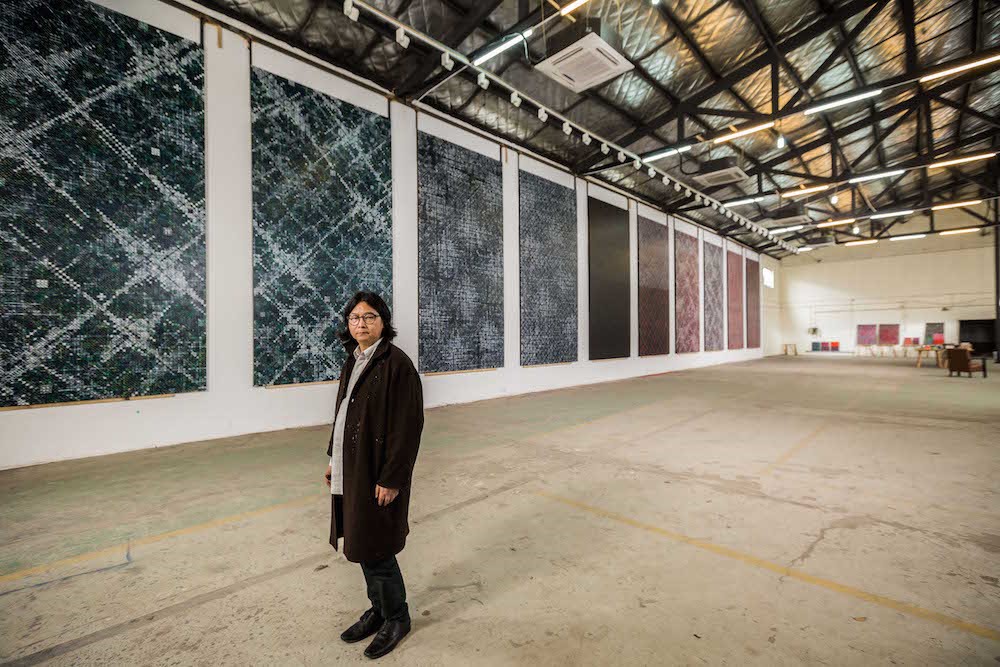
His new show at Long Museum West Bund is his most ambitious and beautiful to date.

Sam Gaskin

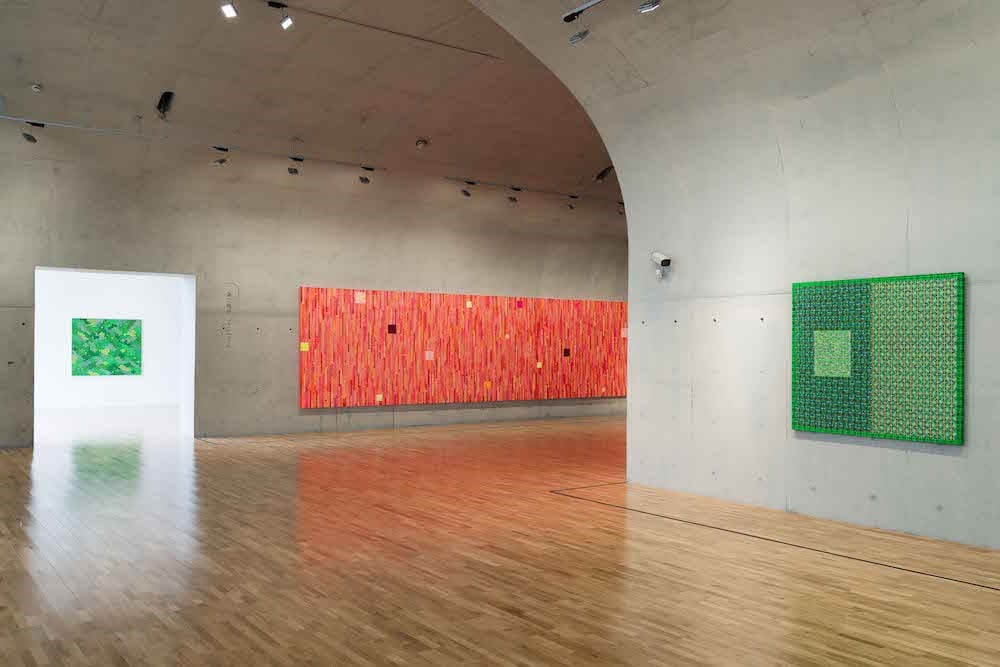
There’s a tradition in Chinese contemporary art of doing something conspicuously difficult or even painful, and giving the ordeal a title that quantifies the time taken or number of repetitions of a particular action.
Ding Yi has relentlessly and exclusively created abstract paintings built up of small crosses since the mid-1980s. He worked 15 hour days for six months to create 10 new paintings (Appearance of Crosses 2015 1-10), each almost five meters high, for his 2015 solo show at the Long Museum West Bund. Nevertheless, Ding does not see himself in this tradition.
“It’s not my intention to do something that’s deliberately difficult,” he says. “The major challenge for me is to explore a new language with which to express myself, not to simplify the technique.”
The new works, five red and five green, face each other in the museum’s expansive main hall. They don’t really constitute a new language, as the underlying grammar of ‘x’ and ‘+’ brushstrokes remain. They’re more like a distinct programming language, built on earlier languages, but made more powerful and intricate. As well as being the culmination of his earlier experiments, the new pieces seem to reference their origins, with the five works in each color scheme arranged from the simplest to the most complex, like a web application’s change log.
Ding’s works are always something of a Rorschach test, with previous paintings evocative of rattan mats, tartans, checks, gingham, military camouflage, QR codes, mathematical symbols, the flags of nation states, and military graveyards crammed with crucifixes, among countless other symbols. The new works have a fractal quality that sees them operate at wholly different dimensions simultaneously, looking at once like microchip circuitry and satellite images of megalopolises at night. Ding, however, is not particularly interested in the connotations his work has for audiences.
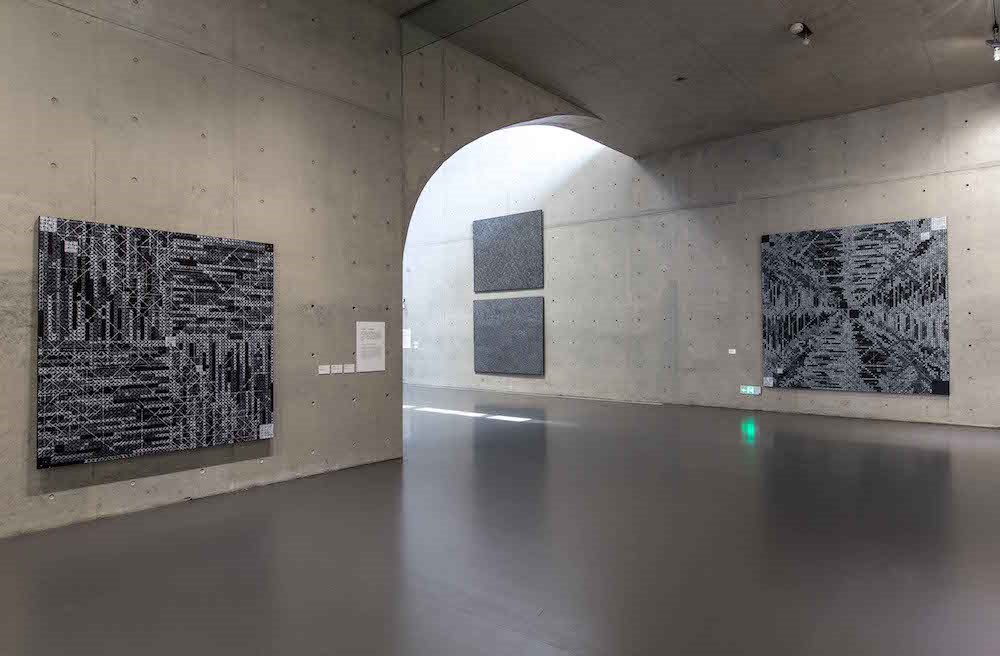
“What I contemplated before creating these 10 new pieces was the space, the high, gray concrete walls. I chose plywood, which is very hard, and to make the tone of the work in black, so it’s a strong connection between the space and the work itself. Between the works themselves there are many connections but also contrasts—one set is red, one green.”
Even Ding’s choice of colors seems allusive, red and green having become synonymous with financial fortunes, thanks to huge new public fascination with stock market prices rising and falling in China. But if anything, he steers away from social references. (The exhibition also includes works painted on tartan fabrics, but none of them much resemble the red, white, and blue ‘migrant-worker plaid’ that’s so prominent and charged with socio-political meaning here.)
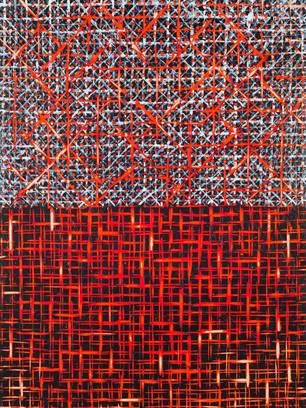
Regarding the new paintings, Ding says, “It’s a total coincidence with the stock market. I chose fluorescent red and green after many tests. These are the two color themes that I found most appropriate for the new technique. I also tested yellow but found it was too close to the original color of the wood.”
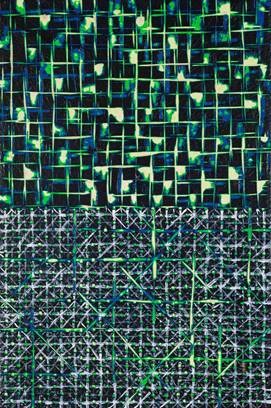
To create the new paintings, Ding rented a temporary 1,000 square meter factory space near Hongqiao airport. He hired a cherry picker to reach the top portion of the works, painting and chiseling the balsa wood blocks where they hung. Both the scale of the works and the use of wood cutting, are unprecedented in his practice—Ding consulted with Professor Sun at Shanghai University of Fine Arts about wood cutting techniques before getting started. The cutting creates marks rimmed with different layers of color, giving them the illusion of luminescence.
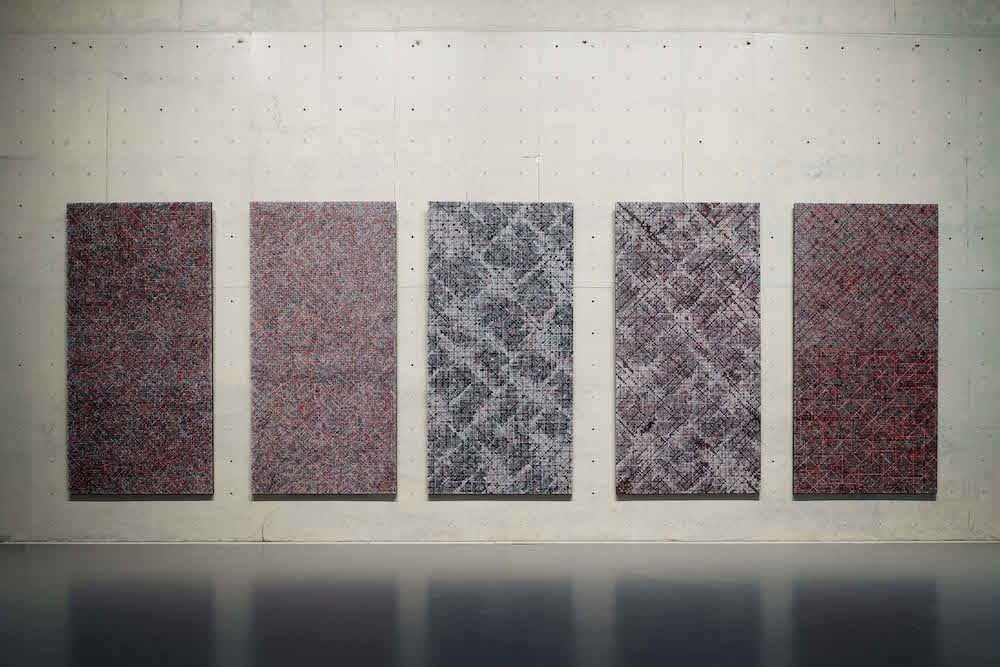
“The new technique helps people to realize or discover the common grammar inside the work, and review the other works in a new light,” he says.
Ding Yi was born in Shanghai in 1962, working at a printing factory as a young man before graduating from the Shanghai Arts and Crafts Institute in 1983. His theme of using crosses emerged in the late 1980s when he was still a student at the Fine Arts Department of Shanghai University, studying under Yu Youhan, a fine art colorist with a modernist sensibility.
A major breakthrough for Ding came when several of his black and white cross paintings were shown at the Venice Biennale in 1993. Two of these were subsequently ‘lost’ in storage by Johnson Chang of Hong Kong’s Hanart Gallery, but have since been returned and are included in this show, along with dozens of works spanning Ding’s entire career.
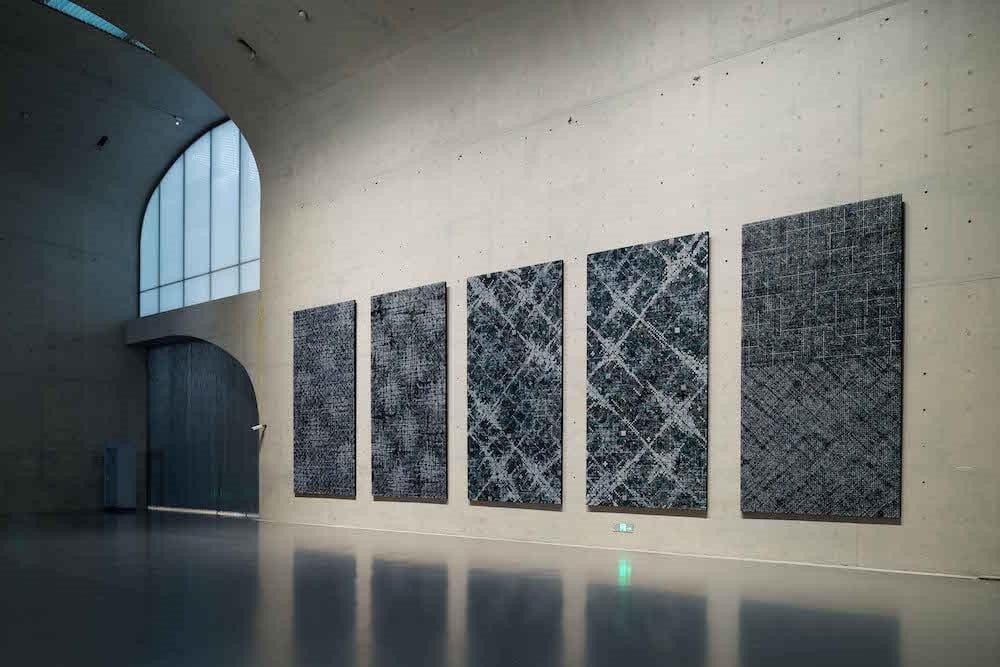
While Ding’s star continues to rise—he was recently collected by the Centre Pompidou, thanks to a donation from Chinese Indonesian collector, Budi Tek—his appearance and manner are modest, even by the standards of Chinese artists.
And indeed, his seeming obsession with the cross is at odds with his experimentations in all other aspects of the work, including dimensions, color, and material. What’s Left to Appear includes acrylics on canvas and tartan and drawings with chalk, charcoal, color pencil, and water color pencil on paper. His color palette ranges from monochrome to pastels to fluorescents, the last of which were most prominently used in 2008 after a collaboration with Hermès on silk scarves.

It was his prosopagnosia (also called face blindness) that led Chuck Close to focus on portraiture, building his photo-realist images on grids, not unlike Ding’s, but, apart from an acknowledged influence from Mondrian, there’s no neat, even apocrvaphyl, explanation for Ding’s interest in crosses. He’s been studiously deconstructing, interrogating, and riffing on the form for three decades, working out of a studio in a quiet part of the M50 art district, and now he’s retreating further, to a studio in Binjiang, believing that “an oasis of calm amid the commotion might be the right ecology for art.”
For Ding, it seems regardless of what’s happening outside the studio, there’s enough commotion on the canvas—or, more recently, plywood—to last a life time.
Ding’s next exhibition is a Chinese abstract art group show at the Power Station of Art, curated by Li Xu, which runs from August 22 through November 22. To see video of Ding Yi creating his most recent works, click here.